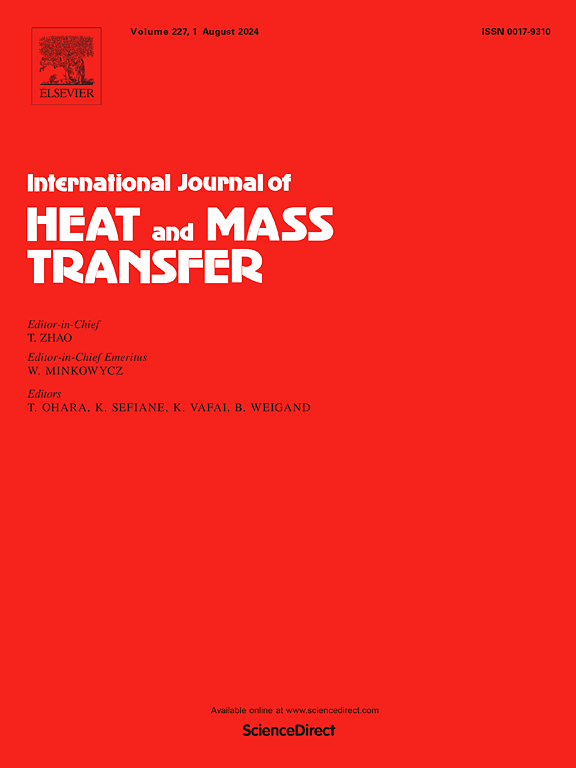Thermovelocimetric characterization of liquid metal convection in a rotating slender cylinder
IF 5
2区 工程技术
Q1 ENGINEERING, MECHANICAL
International Journal of Heat and Mass Transfer
Pub Date : 2025-07-04
DOI:10.1016/j.ijheatmasstransfer.2025.127325
引用次数: 0
Abstract
Rotating turbulent convection occurs ubiquitously in natural convective systems encompassing planetary cores, oceans and atmospheres, as well as in many industrial applications. While the global heat and mass transfer of water-like rotating Rayleigh–Bénard convection is well-documented, the dynamics in low-Prandtl-number liquid metals remain less understood. In this study, we experimentally investigate rotating Rayleigh-Bénard convection in liquid gallium (Prandtl number ) within a slender cylinder (diameter-to-height aspect ratio ) using novel thermovelocimetric diagnostic techniques that integrate simultaneous multi-point thermometry and ultrasonic Doppler velocity measurements. Our results reveal the formation of a stable, global-scale azimuthal wavenumber quadrupolar vortex at low supercriticality. We propose that enhanced wall modes facilitated by the slender cylinder geometry interact with the bulk flow to create these large-scale axialized vortices. Furthermore, our findings imply a distinct scaling behavior for the wall-mode precession frequency in liquid metals, extending previous results obtained for moderate- fluids. This provides new insights into wall-bulk coupling mechanisms of low- rotating convective turbulence.

旋转细长圆柱体中液态金属对流的热速度表征
在包括行星核心、海洋和大气在内的自然对流系统以及许多工业应用中,旋转湍流对流无处不在。虽然像水一样的旋转瑞利-巴姆纳德对流的全球传热和传质得到了充分的记录,但低普朗特数液态金属的动力学仍然鲜为人知。在这项研究中,我们实验研究了在细长圆柱体(直径与高度的纵横比Γ=D/H=1/2)内的液体镓(普朗特数Pr≈0.027)中旋转的瑞利- b 结结体对流,采用了结合多点测温和超声多普勒速度测量的新型热速度诊断技术。我们的结果揭示了一个稳定的,全球尺度的方位波数m=2四极涡旋在低超临界下的形成。我们提出,细长的圆柱体几何形状促进了增强的壁面模式与大块流动相互作用,以产生这些大规模的轴向涡。此外,我们的研究结果表明,在液态金属中,壁模进动频率具有明显的标度行为,扩展了先前在中等pr流体中获得的结果。这为低pr旋转对流湍流的壁体耦合机制提供了新的见解。
本文章由计算机程序翻译,如有差异,请以英文原文为准。
求助全文
约1分钟内获得全文
求助全文
来源期刊
CiteScore
10.30
自引率
13.50%
发文量
1319
审稿时长
41 days
期刊介绍:
International Journal of Heat and Mass Transfer is the vehicle for the exchange of basic ideas in heat and mass transfer between research workers and engineers throughout the world. It focuses on both analytical and experimental research, with an emphasis on contributions which increase the basic understanding of transfer processes and their application to engineering problems.
Topics include:
-New methods of measuring and/or correlating transport-property data
-Energy engineering
-Environmental applications of heat and/or mass transfer

 求助内容:
求助内容: 应助结果提醒方式:
应助结果提醒方式:


